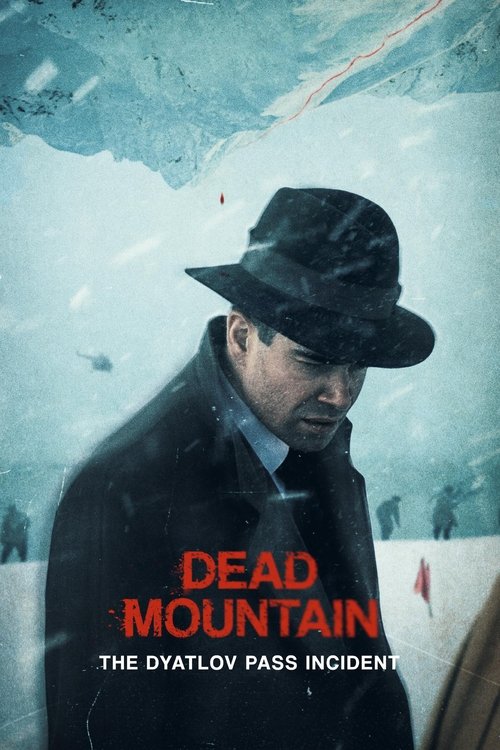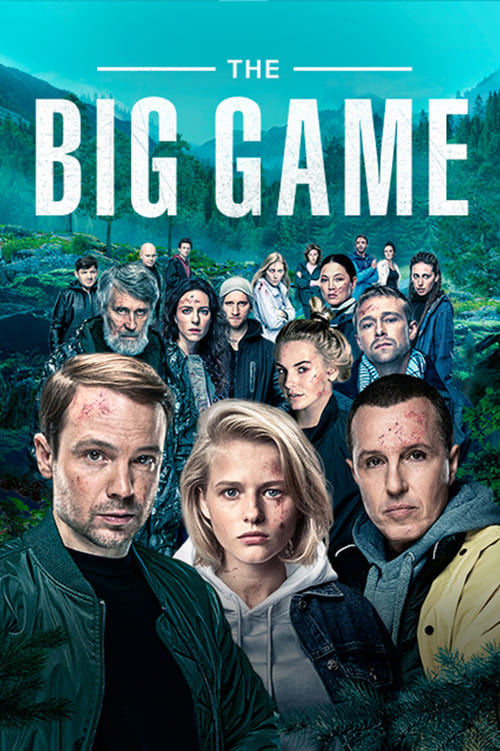
Ask Your Own Question
What is the plot?
In the opening scenes of "Dead Mountain: The Dyatlov Pass Incident," we are introduced to a group of experienced hikers led by Igor Dyatlov, who are preparing for an expedition in the Ural Mountains of Russia in 1959. The group consists of eight members, each with distinct personalities and backgrounds, including the adventurous Zinaida, the cautious Lyudmila, and the determined Yuri. As they gather their supplies and gear, there is a palpable sense of excitement and camaraderie among them, but also an undercurrent of tension as they discuss the challenges they may face on their journey.
The hikers set off into the wilderness, and the cinematography captures the breathtaking beauty of the snow-covered landscape. As they trek deeper into the mountains, the group encounters harsh weather conditions, including heavy snowfall and freezing temperatures. The physical strain begins to take a toll on the hikers, and they have moments of doubt about their ability to complete the expedition. Igor, however, remains resolute, encouraging the group to push forward despite the growing challenges.
As they reach the Dyatlov Pass, the atmosphere shifts dramatically. The group sets up camp for the night, and the tension among them escalates. They share stories around the campfire, but the mood is disrupted when they hear strange noises in the distance. The hikers are unsettled, and some express their fears about the legends surrounding the area, including tales of mysterious creatures and supernatural occurrences. Igor tries to dismiss their concerns, but the unease lingers.
The following day, the group decides to continue their journey, but they are met with increasingly treacherous conditions. As they navigate the icy terrain, they begin to experience disorientation and hallucinations. The harsh environment seems to play tricks on their minds, leading to paranoia and conflict within the group. Tensions rise as they argue about their next steps, with some members wanting to turn back while others insist on pressing forward.
In a pivotal moment, the group splits into two factions. Igor and a few others choose to continue the expedition, while the remaining members decide to return to the safety of their previous campsite. This decision marks a turning point in the story, as the group that continues forward faces the unknown dangers of the mountains alone. As night falls, the remaining hikers set up camp, but they are plagued by fear and uncertainty.
Meanwhile, Igor and his group encounter a series of bizarre and terrifying events. They find strange markings in the snow and experience sudden drops in temperature that seem unnatural. The atmosphere becomes increasingly oppressive, and the group members begin to turn on each other, fueled by fear and paranoia. They hear unsettling sounds and see shadowy figures in the distance, which heightens their sense of dread.
As the situation escalates, the group is attacked by an unseen force. In a chaotic sequence, they scramble to defend themselves, but the terror is overwhelming. One by one, the hikers are picked off in a series of shocking and brutal confrontations. The camera captures their desperation and fear as they fight for survival, but the odds are stacked against them.
In the aftermath of the attack, the remaining survivors are left to grapple with the loss of their friends and the reality of their situation. They attempt to regroup and find a way out of the mountains, but the psychological toll of their experiences weighs heavily on them. The haunting imagery of the snow-covered landscape contrasts with their internal turmoil, creating a sense of isolation and hopelessness.
As the story progresses, the narrative shifts to the investigation into the hikers' disappearance. Authorities are alerted, and search parties are dispatched to the area. The investigation reveals the gruesome details of the hikers' fate, including the discovery of their abandoned tent and the bizarre circumstances surrounding their deaths. The authorities struggle to make sense of the evidence, leading to speculation about what truly happened on that fateful night.
The series culminates in a chilling conclusion as the remaining survivors confront the reality of their experiences. They are left with unanswered questions and a haunting sense of loss. The final scenes depict the lingering impact of the tragedy, as the survivors attempt to move on with their lives, forever marked by the horrors they faced in the mountains. The story ends on an ambiguous note, leaving viewers to ponder the mysteries of the Dyatlov Pass and the dark forces that may have been at play.
What is the ending?
In the ending of "Dead Mountain: The Dyatlov Pass Incident," the remaining characters confront the chilling truth behind the mysterious events that transpired in the Ural Mountains. As they piece together the clues, they face both external dangers and their own internal struggles. The series concludes with a haunting revelation about the nature of fear and the unknown, leaving the fate of some characters ambiguous while others meet tragic ends.
As the final episodes unfold, the tension escalates among the group of investigators and survivors. The chilling atmosphere of the Ural Mountains looms over them, a constant reminder of the peril they face.
Scene 1: The group gathers in a dimly lit cabin, the flickering light casting shadows on their anxious faces. They sift through the evidence they have collected, photographs, and notes scattered across the table. Each character is visibly affected by the weight of their discoveries. Alexei, the determined leader, feels the pressure mounting as he tries to keep the group focused. His internal conflict is palpable; he is driven by a need for answers but is haunted by the fear of what those answers might reveal.
Scene 2: Outside, the wind howls, and the snow begins to fall heavily, isolating them further. The group decides to split up to cover more ground, a decision that weighs heavily on Alexei. He knows that the mountains hold secrets, but he is also aware of the dangers that lurk in the shadows. As they venture out, the camera captures the stark beauty of the snow-covered landscape, juxtaposed with the growing sense of dread.
Scene 3: One by one, the characters encounter terrifying phenomena. Mysterious sounds echo through the trees, and strange visions plague their minds. Lena, a sensitive and intuitive member of the group, experiences a profound sense of dread as she feels the presence of something otherworldly. Her emotional turmoil is evident as she grapples with her fear and the desire to uncover the truth.
Scene 4: Tensions rise when they regroup, and the group begins to argue about the next steps. Some want to leave the mountains, fearing for their lives, while others, driven by curiosity and a sense of duty, insist on continuing their investigation. The conflict highlights the differing motivations of the characters: some seek closure, while others are consumed by their thirst for knowledge.
Scene 5: As night falls, the atmosphere becomes increasingly oppressive. The group decides to stay one more night, but the decision proves fatal. They are stalked by an unseen force, and one by one, they begin to disappear. The camera captures the panic in their eyes as they realize they are not alone. The fear is palpable, and the audience can feel the weight of their impending doom.
Scene 6: In a climactic moment, Alexei and Lena confront the entity that has been haunting them. The revelation is both terrifying and tragic. They discover that the truth behind the Dyatlov Pass Incident is intertwined with their own fears and regrets. In a desperate attempt to escape, Lena sacrifices herself to save Alexei, a poignant moment that underscores her bravery and the depth of their bond.
Scene 7: The series concludes with Alexei, now alone, standing at the edge of the mountain, looking out over the vast, desolate landscape. The weight of loss hangs heavy on him, and the haunting memories of his friends linger in the air. The final shot captures his expression of sorrow and determination, leaving viewers with a sense of unresolved mystery and the chilling reminder of the unknown.
In the end, the fates of the characters are starkly different. Lena's sacrifice highlights her courage, while Alexei is left to grapple with the consequences of their journey. The series closes on a haunting note, emphasizing the themes of fear, loss, and the relentless pursuit of truth in the face of the unknown.
Is there a post-credit scene?
In the show "Dead Mountain: The Dyatlov Pass Incident," there is no post-credit scene following the episodes of Season 1. The series concludes its narrative without additional scenes or content after the credits, focusing instead on the unfolding mystery and the emotional journeys of the characters throughout the episodes. The story wraps up with the final moments of the last episode, leaving viewers with a sense of intrigue and contemplation about the events that transpired, but without any further revelations or scenes to follow.
What motivates the main characters to investigate the Dyatlov Pass incident?
The main characters are driven by a mix of personal and professional motivations. Some are journalists seeking the truth behind the mysterious deaths, while others are family members of the victims, desperate for closure. The emotional weight of the tragedy compels them to delve deeper into the dark secrets surrounding the incident.
How does the show depict the relationship between the characters involved in the investigation?
The relationships among the characters are complex and often strained. As they uncover more about the Dyatlov Pass incident, tensions rise due to differing opinions on how to approach the investigation. Personal conflicts arise, revealing vulnerabilities and fears, particularly as they confront the supernatural elements that seem to haunt their journey.
What supernatural elements are introduced in the series, and how do they affect the characters?
Supernatural elements manifest through eerie occurrences and unexplained phenomena that the characters encounter during their investigation. These elements create a sense of dread and paranoia, affecting the characters' mental states. Some begin to question their own sanity, while others become obsessed with uncovering the truth, leading to a rift in their group dynamics.
How does the setting of the Ural Mountains contribute to the story's atmosphere?
The Ural Mountains are depicted as both beautiful and treacherous, with vast, snow-covered landscapes that evoke a sense of isolation and danger. The harsh weather conditions and the remoteness of the location amplify the characters' feelings of vulnerability and fear, creating an oppressive atmosphere that mirrors their internal struggles as they face the unknown.
What role does the historical context of the Dyatlov Pass incident play in the characters' investigation?
The historical context serves as a backdrop that informs the characters' motivations and actions. As they learn about the original incident and the various theories surrounding it, they become increasingly aware of the political and social tensions of the time. This knowledge shapes their investigation, as they grapple with the implications of uncovering truths that some may want to remain hidden.
Is this family friendly?
"Dead Mountain: The Dyatlov Pass Incident" is a series that delves into the mysterious events surrounding the Dyatlov Pass incident, and it contains several elements that may not be suitable for children or sensitive viewers.
-
Violence and Gore: The show includes scenes depicting injuries and death, which can be graphic and unsettling. The portrayal of the aftermath of the incident may be particularly distressing.
-
Supernatural Elements: There are themes involving the supernatural and psychological horror, which may be frightening for younger audiences or those sensitive to such content.
-
Tension and Suspense: The series builds a significant amount of tension and suspense, which can create a sense of anxiety and fear, potentially overwhelming for some viewers.
-
Themes of Grief and Loss: The emotional weight of loss and the impact of tragedy on families and friends is a recurring theme, which may evoke strong feelings and be difficult for younger viewers to process.
-
Isolation and Desperation: The characters experience extreme isolation and desperation, which can be emotionally intense and may resonate negatively with sensitive individuals.
Overall, while the series is rich in storytelling and atmosphere, its darker themes and graphic content may not be appropriate for all audiences.


































